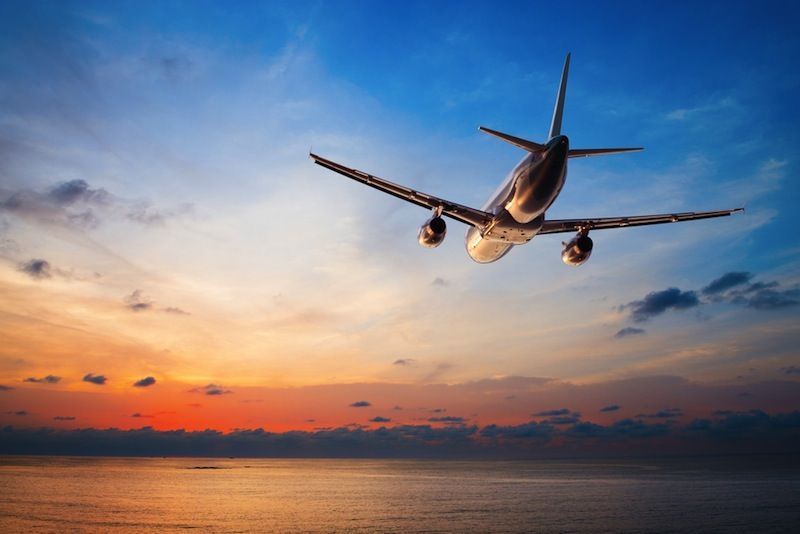Ebola Airport Screening Prevents 3 Cases Per Month from Traveling

If the Ebola screening procedures currently taking place at airports in West Africa were to stop, about three people with the disease would leave the outbreak region each month as they traveled by plane, according to estimates from a new study.
The results underscore the importance of maintaining effective Ebola screening at the airports in Guinea, Liberia and Sierra Leone, the countries most affected by the current Ebola outbreak, the researchers said. The screening of travelers departing from these countries began on Aug. 8.
In addition, the new findings suggest that screening passengers as they leave the countries most affected by Ebola is much more efficient than screening passengers as they enter other countries. The United States began Ebola entry screening at five airports on Oct. 8.
"Exit screening at the three international airports — Conakry, Monrovia and Freetown — in Guinea, Liberia and Sierra Leone [respectively] should allow all travelers at highest risk of exposure to Ebola to be assessed with greater efficiency compared with entry screening the same passengers as they arrive in cities around the world," Dr. Kamran Khan, of St. Michael's Hospital in Toronto, said in a statement. However, exit screening "will require international support to effectively implement and maintain,"Khan said. [Could Ebola Become Airborne?]
The researchers analyzed information from upcoming and recent flight schedules, as well as data on Ebola virus surveillance in West Africa, to model the number of people with Ebola expected to travel by plane out of the three affected countries.
The study found that more than half of air travelers who were leaving Guinea, Liberia or Sierra Leone had final destinations in Ghana, Senegal, the United Kingdom, France and Gambia. And more than 60 percent of travelers leaving the outbreak countries this year are expected to have final destinations in low- or lower-middle-income countries, the researchers said.
Without airport exit screening in Guinea, Liberia and Sierra Leone, an average of 2.8 travelers with Ebola would leave these countries on international flights each month, the study found.
Sign up for the Live Science daily newsletter now
Get the world’s most fascinating discoveries delivered straight to your inbox.
In addition, the study determined that exit screening was much more efficient and less disruptive than entry screening.
Exit screening is conducted at airports in just three cities; entry screening would need to be conducted in the 15 cities that receive direct flights and more than 1,200 cities that receive indirect flights from Guinea, Liberia and Sierra Leone. In cities that do not receive direct flights from these countries, more than 2,500 people would need to be screened upon arriving in order to identify one person who traveled out of Guinea, Liberia and Sierra Leone, the researchers said.
What's more, the nonstop flights out of Guinea, Liberia and Sierra Leone are 2.7 hours on average, so it's unlikely that a person who was screened just before getting on a plane would develop symptoms during the fight. (It takes between two and 21 days for a person infected with Ebola to show symptoms.)
"While screening travelers arriving at airports outside of West Africa may offer a sense of security, this would have, at best, marginal benefits, and could draw valuable resources away from more effective public health interventions," Khan said.
Dr. Jesse L. Goodman, a professor of medicine at Georgetown University Medical Center in Washington D.C., agreed that exit screening is more efficient than entry screening. However, entry screening provides an additional layer of caution, and may catch people with symptoms who were missed on exit screening, Goodman said.
"If exit screening was prefect, [entry screening] might not add much," said Goodman, who was not involved in the new research. But it's sometimes hard for people to understand or answer questions asked during exit screening, so entry screening might uncover a new Ebola exposure, Goodman said.
The finding that many travelers from West Africa are headed for lower-income countries, which may have limited medical resources to respond to Ebola, is concerning, Goodman told Live Science.
"If you look at how [the United States] has been challenged by this single patient," the new findings should emphasize to these other countries "just how important it is for them to be ready for the same challenges," Goodman said.
Although some countries have restricted air travel from Guinea, Liberia and Sierra Leone, "excessive constraints on air travel could have severe economic consequences that could destabilize the region and possibly disrupt critical supplies of essential health and humanitarian services," Khan said. "The best approach to minimize risks to the global community is to control the epidemic at its source," Khan added.
For the study, the researchers assumed that all travelers from the three West African countries had an equal risk of exposure to Ebola. However, people in higher socioeconomic groups (who tend to have more access to air travel) may actually have a lower risk of exposure than those in lower socioeconomic groups, the researchers said. This means the findings may overestimate the risk of a person with Ebola traveling by air to another country. On the other hand, the study did not account for the underreporting of Ebola cases, which could result in an underestimation of risk, the researchers noted.
The study is published in the Oct. 21 issue of the journal The Lancet.
Follow Rachael Rettner @RachaelRettner. Follow Live Science @livescience, Facebook & Google+. Original article on Live Science

Rachael is a Live Science contributor, and was a former channel editor and senior writer for Live Science between 2010 and 2022. She has a master's degree in journalism from New York University's Science, Health and Environmental Reporting Program. She also holds a B.S. in molecular biology and an M.S. in biology from the University of California, San Diego. Her work has appeared in Scienceline, The Washington Post and Scientific American.










